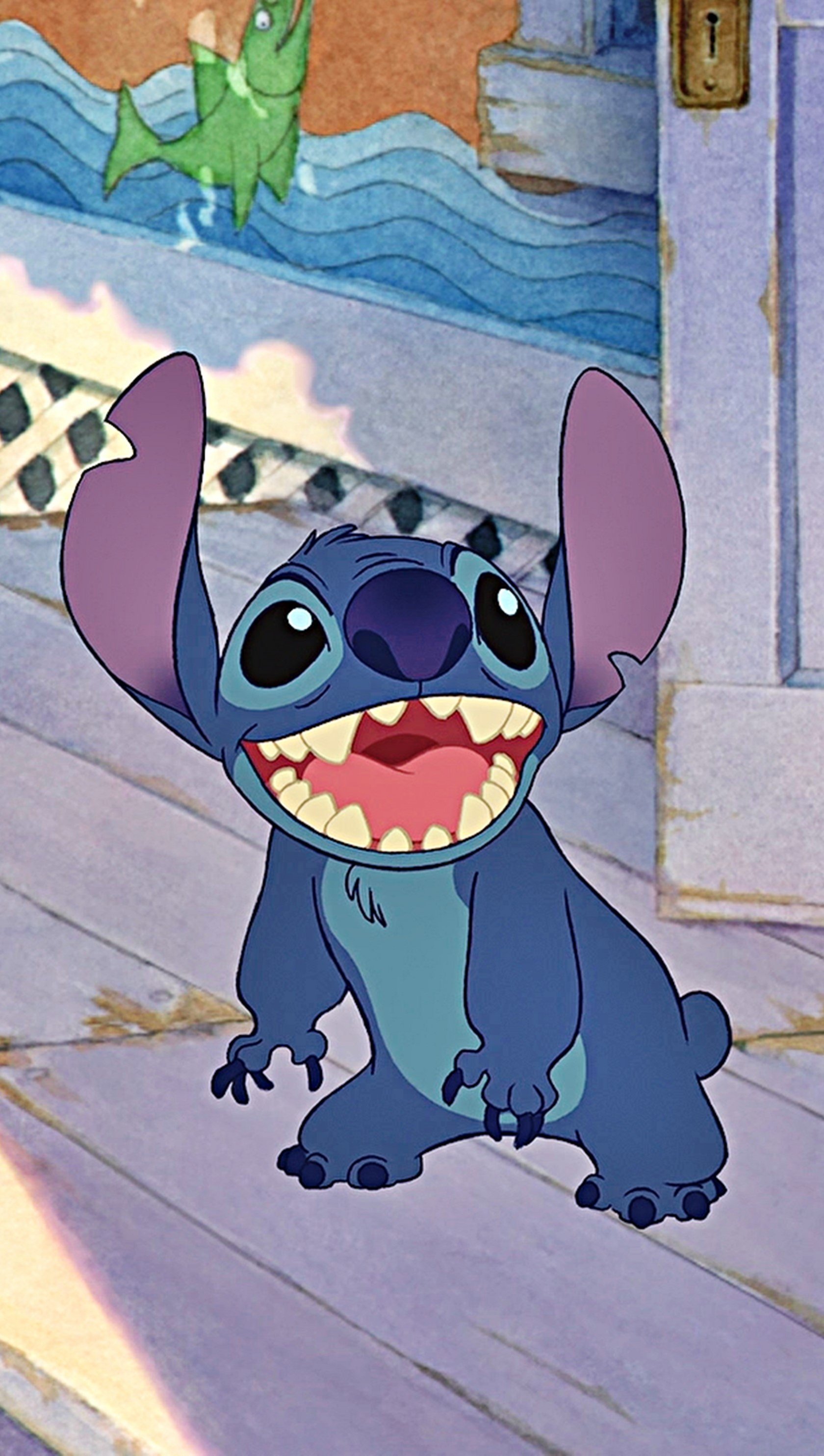Stitch Evil Level - Unraveling Embroidery Challenges
Have you ever picked up a needle and thread, ready to create something lovely, only to find yourself staring down a stitch that seems to have a mind of its own? It happens to everyone, honestly. There are moments when certain stitches feel like they are actively working against you, presenting little puzzles or a bit of a fuss. We are going to talk about some common embroidery stitches and just how much trouble they can be, or how friendly they tend to be, based on what we've learned from a collection of helpful guides.
It's quite interesting, really, how some stitches are pretty straightforward from the get-go, while others hold a small surprise or two. This collection of stitching guides, you see, breaks down a few of these, giving us a peek into their individual quirks. It's almost like each stitch has its own personality, some being very easy-going and others requiring just a little more patience from you, the person holding the needle.
So, we'll explore what makes certain stitches a breeze and what might give another one a slightly higher "evil level" – meaning, how much of a challenge it might present. We'll look at what makes some parts of a stitch a bit tricky and how you can, in a way, get the upper hand. It's all about getting to know your stitches, really, and figuring out their little secrets to make your stitching life a lot smoother.
- Actor Tom Bateman
- Allintitleyour Honor Showtime Cast
- Little House On The Prairie
- Does Barron Trump Play Any Musical Instruments
- Shemar Moore Birth Date
Table of Contents
- What is the "Stitch Evil Level" of a Stem Stitch Rose?
- Understanding the Stem Stitch Rose's "Stitch Evil Level"
- How Does the Outline Stitch Rate on the "Stitch Evil Level" Scale?
- Clean Starts and Lowering the "Stitch Evil Level"
- Why is the Stem Stitch Often Considered Low on the "Stitch Evil Level"?
- Exploring Possibilities and the "Stitch Evil Level"
- Can Practice Reduce a Stitch's "Evil Level"?
- Tackling Higher "Stitch Evil Level" Stitches
What is the "Stitch Evil Level" of a Stem Stitch Rose?
When you consider the stem stitch rose, it's pretty simple in concept, you know? The idea behind it, how it generally comes together, is quite easy to grasp. You might think, "Oh, this looks like something I can do without too much fuss." And for the most part, that thought is correct. It's a lovely way to make a little flower with thread, and the basic steps are not at all complicated to get your head around, which is rather nice. This makes its general "stitch evil level" pretty low for a lot of people just starting out with it, or for those who have been stitching for a while.
However, there's a part of this particular stitch that can be a bit more of a puzzle, a little more demanding, if you will. The most complicated part about it is the center knot that’s often used to start the rose. This tiny little knot, right there in the middle, can sometimes feel like it has a slightly higher "stitch evil level" all on its own. It's the point where things might get a little fiddly, requiring just a bit more precision and a steady hand. So, while the overall stitch is quite friendly, that one element can certainly give folks a moment of pause, or so it seems.
But I’ll let you in on a little secret below, you see. Even with that one tricky bit, there are ways to approach it that make it less of a bother. It's all about knowing the little tricks, the small adjustments that can turn a potentially frustrating moment into something quite manageable. This means that even the parts that seem to raise the "stitch evil level" of a design can be tamed with a bit of insight. You might find that once you get the hang of that center knot, the entire stem stitch rose becomes a truly enjoyable thing to create, and it really is a lovely stitch for adding pretty details to your fabric.
- Steve Harrington Age
- Morgan Wallen Son
- Johnny Depp Girlfriend 2025
- Did Jay Leno Pass Away
- Rachael Rays Personal Life
Understanding the Stem Stitch Rose's "Stitch Evil Level"
The stem stitch rose, as we touched on, really shows us how a stitch can have different levels of "evil," or challenge, within itself. Its basic structure is straightforward, which keeps its overall "stitch evil level" quite low. This makes it a popular choice for many, as it offers a pretty outcome without too much struggle. It's like a friendly hello from your needlework. You can, for instance, use it to add a sweet little bloom to a piece of clothing or a small decorative item.
Then there's that central knot, which, honestly, can be a bit of a gatekeeper. This little knot, which often kicks off the rose, is where many find their first real test with this stitch. It's the part that can make you sigh just a little, perhaps even raise the "stitch evil level" for a moment or two. It requires a certain touch, a knack for getting the thread to sit just so. However, once you figure out its rhythm, it tends to become much less of a concern, and you'll wonder why you ever found it tricky in the first place.
Knowing this distinction, between the general flow of the stitch and its specific, more demanding parts, helps you approach it with the right mindset. It’s not that the whole stitch is difficult; it's just that one particular step might need a bit more focus. This sort of insight is what helps lower the perceived "stitch evil level" for any new technique you pick up. It's about breaking down the bigger picture into smaller, more manageable pieces, which is, in some respects, how you conquer any new skill.
How Does the Outline Stitch Rate on the "Stitch Evil Level" Scale?
Let's talk about the outline stitch. This one is a basic stitch used in hand embroidery for lines and filling, you know? It's one of those stitches that you learn early on, and for good reason. It's quite fundamental, forming the backbone for many designs. Its purpose is pretty clear: to create clean lines and fill in spaces, and it does that job very well without a lot of fuss. This makes its "stitch evil level" almost non-existent for most people. You could say it's one of the friendliest stitches around, actually.
It’s an easy embroidery stitch and works up quickly, with a nice rhythm. That rhythm is a big part of why it's so approachable. Once you get going, there's a natural flow to it, a steady back-and-forth motion that becomes almost meditative. You can really get into a groove, and before you know it, you've covered a good amount of ground. This quick progress and pleasant pace keep the "stitch evil level" firmly in the "easy" category. It's a stitch that encourages you to keep going, which is a good thing for anyone trying to finish a project.
You can work the stitch in a variety of ways, too, which adds to its versatility without adding to its difficulty. Whether you're making a straight line, a curve, or filling a shape, the outline stitch adapts pretty well. It's a workhorse stitch, reliable and uncomplicated. So, if you're looking for something that won't give you any headaches and keeps the "stitch evil level" down, the outline stitch is a solid choice. It's definitely one that you can rely on for a smooth experience, and it's often a go-to for many stitchers.
Clean Starts and Lowering the "Stitch Evil Level"
Speaking of basic stitches and keeping things simple, a clean start is something that really helps keep the "stitch evil level" low for any project. There was a stitch tip from April 16, 2018, that talked about a clean start with two strands, and it's a topic that comes up a lot. One of the questions that I’m asked frequently concerns embroidering on personal or household linens, where the back of the work needs to look neat. This is where a good, clean start becomes very important, as a matter of fact.
When you're working on something that will be seen from both sides, like a tea towel or a pillowcase, the back of your stitching needs to be as tidy as the front. This can feel like a bit of a challenge, almost like a hidden "stitch evil level" lurking on the other side of your fabric. But with the right technique for starting your threads, you can avoid messy knots and loose ends that might otherwise spoil the appearance. It’s all about setting yourself up for success from the very first stitch, you know?
Getting a clean start, especially with multiple strands, can sometimes seem a little daunting at first, but it truly makes a big difference. It prevents those little bumps and tangles that can raise the "stitch evil level" of your finished piece. When the back is neat, it shows a level of care and skill that really elevates your work, even if it's just for your own enjoyment. So, taking the time to master clean starts is a small investment that pays off in a much smoother, less frustrating stitching experience overall.
Why is the Stem Stitch Often Considered Low on the "Stitch Evil Level"?
The stem stitch is, for many, a true favorite hand embroidery stitch, and it's easy to see why. It’s often considered quite low on the "stitch evil level" because it is so versatile and so attractive. You can use it for all sorts of things, from outlining shapes to creating delicate stems for flowers, as its name suggests. This adaptability means it's a stitch you'll reach for again and again, which is pretty convenient when you're working on different projects. It just seems to fit in everywhere, really.
Its appeal also comes from how nice it looks. The way the threads twist together creates a slightly raised, rope-like line that has a lovely texture. This visual appeal, combined with its ease of use, makes it a joy to work with. It doesn't fight you; instead, it seems to cooperate, making your stitching experience quite pleasant. So, its "stitch evil level" remains low because it consistently delivers good results without demanding too much effort from you, which is always a bonus, you know?
Because it's so widely applicable and consistently pretty, the stem stitch becomes a go-to for many. It's a reliable friend in your stitching arsenal. You can trust it to do what you need it to do, whether you're outlining a design or adding a bit of detail. This reliability is a key factor in keeping its perceived "stitch evil level" down. It’s a stitch that performs well, time after time, and that's something every stitcher can appreciate, as a matter of fact.
Exploring Possibilities and the "Stitch Evil Level"
To truly keep the "stitch evil level" at bay, especially as you get more curious about different techniques, a good stitch dictionary is incredibly useful. If you want to explore other possibilities further, I strongly suggest investing in a good stitch dictionary. Think of it as a guide, a book full of answers to all your stitching questions. It's a resource that can open up a whole new world of creative expression, making what might seem difficult much more approachable, which is nice.
A good stitch dictionary will help you understand how different stitches are formed, what they are best used for, and how to troubleshoot common issues. This kind of detailed information is like having a wise mentor right there with you, showing you the ropes and helping you avoid those moments where a stitch feels like it's reached its peak "evil level." It can show you variations of stitches you already know and introduce you to entirely new ones, expanding your skills without adding frustration. You'll find yourself trying things you never thought you could, actually.
Having a reference like this means you don't have to guess or struggle alone. When a stitch isn't behaving quite right, or you're unsure how to begin a new one, you can simply look it up. This immediate access to information helps to demystify even the trickiest stitches, effectively lowering their "stitch evil level" by giving you the knowledge to conquer them. It’s an investment that truly pays off in terms of confidence and expanding your creative horizons, and it's something every serious stitcher should consider having on hand.
Can Practice Reduce a Stitch's "Evil Level"?
Can practice reduce a stitch's "evil level"? Absolutely, it can. This is true for any skill, really, but especially for something as tactile as hand embroidery. You need to practice until you can stitch in all directions with it. This means not just going in a straight line, but making curves, corners, and anything else a design might ask of you. The more you work with a stitch, the more comfortable you become, and the less "evil" it seems, which is pretty consistent with how learning works.
The more you practice, the more the stitch makes sense, and the easier it becomes to stitch in all directions. It's like your hands and your brain start to communicate better, finding the natural rhythm and movement for each particular stitch. What once felt awkward or clumsy begins to feel natural, almost second nature. This repeated effort is what truly lowers the "stitch evil level" because you're building muscle memory and a deeper understanding of the stitch's mechanics. You'll find yourself thinking less about the steps and more about the creative flow, which is a good sign.
Embroidery stitch templates come in a package of six clear acetate sheets that can be cut down into strips by following the guidelines on the sheets. These templates are quite helpful for practice, giving you clear lines to follow as you get the feel for a stitch. They provide a structured way to repeat movements, which is key to mastery. All in a heap, this is pretty useful for anyone looking to get better at their craft and bring down the "stitch evil level" of any stitch they encounter. They offer a tangible way to improve your technique, and they're easy to use, too.
Tackling Higher "Stitch Evil Level" Stitches
Now, sometimes you want to learn how to work the long & short stitch, for needle painting and shading techniques in hand embroidery. These are techniques that generally have a bit of a higher "stitch evil level" for many people, simply because they require a finer touch and a deeper understanding of color and light. Needle painting, in particular, is about creating realistic, painterly effects with thread, which is a step up from basic line work. It's a rewarding challenge, though, for those who want to push their skills.
And if you want to explore some stitch combinations with bullion knots, this buttonholed bullion buttonhole wheel tutorial is rather fun. Bullion knots, on their own, can be a bit tricky for some. They involve wrapping the thread around the needle multiple times to create a raised, elongated knot. Combining them, especially in a wheel shape, adds another layer of complexity, making their "stitch evil level" a bit more pronounced. But, as the tutorial suggests, it can be a really enjoyable process once you get the hang of it, and the results are quite striking.
Here’s the video for the bullion knot, which shows that visual aids are incredibly helpful when tackling stitches with a higher "stitch evil level." Seeing someone demonstrate the steps can clarify things much faster than just reading instructions. Years ago, I wrote a series of articles on hand embroidered writing. The instructional content is, as always, about breaking down these more intricate processes into manageable steps. Whether it's writing with thread or creating complex knots, the goal is always to make the seemingly difficult approachable, bringing that "evil level" right down to a friendly challenge.
Final Summary
This discussion explored the perceived difficulty, or "stitch evil level," of various embroidery techniques, drawing insights from a collection of stitching tutorials. We looked at how the stem stitch rose, despite its simple concept, presents a challenge with its center knot, while the outline stitch is consistently easy and quick to master. The importance of clean starts for a polished finish was highlighted, especially for linens. We also considered why the versatile and attractive stem stitch generally has a low "evil level." The piece emphasized the value of a good stitch dictionary for exploring possibilities and reducing frustration. Finally, it covered how consistent practice, aided by templates, can significantly lower a stitch's difficulty, even for more advanced techniques like needle painting with long & short stitch or combining bullion knots, suggesting that visual guides are key to conquering these more intricate stitches.

Download Adorable Stitch And Angel Wallpaper | Wallpapers.com

Lilo Stitch

Lilo and Stitch: Stitch by SkyfallerArt on DeviantArt